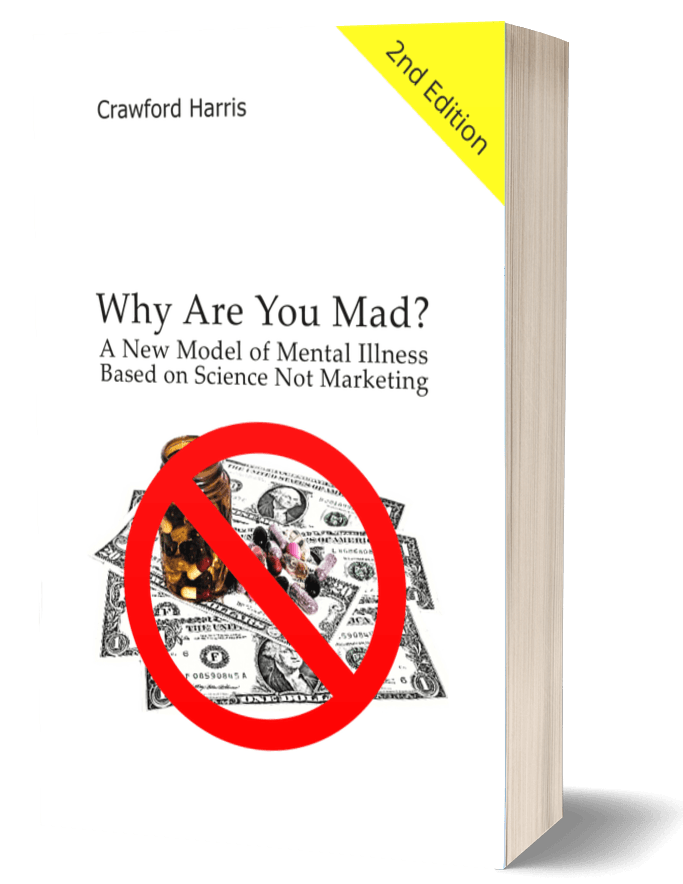
Cassandra was the Greek prophetess that was always right but who was never believed. This article is the longest I have ever posted but it is deserving of its deep dive. It covers what, for many people, has been and will be an actual matter of life and death.
If you or anyone about whom you care ever takes a commercial flight, this is a must read. It is about the equivalent of 9 or 10 pages in a book. Please read this, even if not all in one sitting. In the interest of transparency, I worked for Delta Air Lines for more than eleven years. I have also been a very frequent flier, including 65 trips to Japan among many other distant destinations and 3,162 hours of ‘stick time.’
This article by Gregory Travis and Marshall Auerback shines a bright light on the consequences of financial engineering corrupting aeronautical engineering, of corporations putting profits before safety.
Almost immediately after the takeoff of Ethiopian Airlines Flight 302 on March 10, the first signs of trouble appeared. The Boeing 737’s two angle of attack indicators, one on either side of the aircraft, gave inconsistent readings. The left indicator suddenly recorded a dangerous angle of attack of 36 degrees, while the right one showed a benign 11 degrees.
In response to the angle of attack from the left side, the stick shaker on the captain’s side (left) activated. The stick shaker vibrated the pilot’s control column to warn of an impending stall. The co-pilot’s column, however, did not vibrate as it was activated from the right-side angle of attack sensor. This was the first indication to the pilots that the angle of attack sensors disagreed with one another.
In less than a second, after going from 36 degrees, the pilot’s left-hand angle of attack (AOA) sensor suddenly jumped to 75 degrees of angle of attack. If it were actually true that the aircraft pitched up that rapidly, the airframe would have broken apart.
It was not true, however. The sensor was faulty. Yet the Maneuvering Characteristics Augmentation System (MCAS) computer software did not disregard this obviously incorrect reading.
Six seconds later, the heater on the left-hand side AOA sensor changed state. Angle of attack sensors are particularly susceptible to malfunction when water from rain or a recent airplane washing gets into their guts. To prevent this, they are fitted with ice-melting heaters.
Two minutes after takeoff, the captain called for the airplane’s flaps to be retracted. Because the 737’s MCAS function does not activate until the flaps are retracted, the captain has unconsciously summoned his, and his passengers’, executioner.
Two minutes and 15 seconds after takeoff had passed. Because it was only reading the faulty left-hand AOA sensor and because that sensor was indicating a dangerous stall, the MCAS software activated for 10 seconds—spinning the trim wheels 46 revolutions—and pushed the 737’s nose toward the ground.
Ten seconds later, the pilots disabled MCAS by throwing the cutout switches. Next, they attempted to “roll back” those 46 revolutions manually but found that the aerodynamic forces were so great that the trim wheels could not be moved back by hand. Meanwhile, the captain asked his first officer to help him hold the control column back as the nose-down force commanded by MCAS was overwhelming his strength.
In desperation, they turned the trim cutoff switch back “on” so that they could use the electric motor to turn the trim wheel, which they could not move by hand. They were successful for a moment at un-winding it, but MCAS rapidly reactivated and drove the trim back nose-down. The trim wheels were rotating nearly 300 RPM, in the wrong direction, under MCAS command.
The pilots were helpless. The trim reached its nose-down stop, and the control column force necessary to keep the plane level overwhelmed the pilots. The plane eventually plunged into the ground at a 40-degree angle while traveling nearly 600 miles per hour, killing everybody on board.
This mishap is one of the most tragic illustrations of Boeing’s decline. It boggles the mind to consider how these issues escaped regulatory review and how the aircraft were deemed airworthy. This could only happen in an industry afflicted by a wholesale collapse of regulation and oversight.
Is the Boeing company even capable of building safe commercial airliners any longer? And should we expect to see the fatally flawed 737 MAX 8 return to service? In regard to the latter, no less than the CEO of Ethiopian Airlines has just said no. The evidence seems to indicate that public-sector regulatory oversight is incapable of reviewing manufacturers’ designs and ascertaining their airworthiness.
In short, it looks like the system has collapsed.
Shareholder Capitalism, the Military, and the Beginning of the End for Boeing
The fall of the Berlin Wall and the corresponding end of the Soviet Empire gave the fullest impetus imaginable to the forces of globalized capitalism, and correspondingly unfettered access to the world’s cheapest labor. What was not to like about that? It afforded multinational corporations vastly expanded opportunities to fatten their profit margins and increase the bottom line with seemingly no risk posed to their business model.
Or so it appeared. In 2000, aerospace engineer L.J. Hart-Smith’s remarkable paper, sardonically titled “Out-Sourced Profits – The Cornerstone of Successful Subcontracting,” laid out the case against several business practices of Hart-Smith’s previous employer, McDonnell Douglas, which had incautiously ridden the wave of outsourcing when it merged with the author’s new employer, Boeing. Hart-Smith’s intention in telling his story was a cautionary one for the newly combined Boeing, lest it follow its then recent acquisition down the same disastrous path.
Of the manifold points and issues identified by Hart-Smith, there is one that stands out as the most compelling in terms of understanding the current crisis enveloping Boeing: The embrace of the metric “Return on Net Assets” (RONA). When combined with the relentless pursuit of cost reduction (via offshoring), RONA taken to the extreme can undermine overall safety standards.
Related to this problem is the intentional and unnecessary use of complexity as an instrument of propaganda. Like many of its Wall Street counterparts, Boeing also used complexity as a mechanism to obfuscate and conceal activity that is incompetent, nefarious and/or harmful to not only the corporation itself but to society as a whole (instead of complexity being a benign byproduct of a move up the technology curve).
All of these pernicious concepts are branches of the same poisoned tree: “shareholder capitalism”:
“A notion best epitomized by Milton Friedman that the only social responsibility of a corporation is to increase its profits, laying the groundwork for the idea that shareholders, being the owners and the main risk-bearing participants, ought therefore to receive the biggest rewards. Profits therefore should be generated first and foremost with a view toward maximizing the interests of shareholders, not the executives or managers who (according to the theory) were spending too much of their time, and the shareholders’ money, worrying about employees, customers, and the community at large. The economists who built on Friedman’s work, along with increasingly aggressive institutional investors, devised solutions to ensure the primacy of enhancing shareholder value, via the advocacy of hostile takeovers, the promotion of massive stock buybacks or repurchases (which increased the stock value), higher dividend payouts and, most importantly, the introduction of stock-based pay for top executives in order to align their interests to those of the shareholders. These ideas were influenced by the idea that corporate efficiency and profitability were impinged upon by archaic regulation and unionization, which, according to the theory, precluded the ability to compete globally.”
“Return on Net Assets” (RONA) forms a key part of the shareholder capitalism doctrine. In essence, it means maximizing the returns of those dollars deployed in the operation of the business. Applied to a corporation, it comes down to this: If the choice is between putting a million bucks into new factory machinery or returning it to shareholders, say, via dividend payments, the latter is the optimal way to go because in theory it means higher net returns accruing to the shareholders (as the “owners” of the company), implicitly assuming that they can make better use of that money than the company itself can. It is an absurd conceit to believe that a dilettante portfolio manager is in a better position than an aviation engineer to gauge whether corporate investment in fixed assets will generate productivity gains well north of the expected return for the cash distributed to the shareholders. But such is the perverse fantasy embedded in the myth of shareholder capitalism.
Engineering reality, however, is far more complicated than what is outlined in university MBA textbooks. For corporations like McDonnell Douglas, for example, RONA was used not as a way to prioritize new investment in the corporation but rather to justify disinvestment in the corporation. This disinvestment ultimately degraded the company’s underlying profitability and the quality of its planes (which is one of the reasons the Pentagon helped to broker the merger with Boeing; in another perverse echo of the 2008 financial disaster, it was a politically engineered bailout).
RONA in Practice
A little bit of math now to help illustrate: Let’s say that a company determined that in order to justify having some piece of equipment or some native capability, it needed to provide a 10 percent return on its investment. The equation might look like:
Return ≥ 10% where Return = Profits Generated / Investment Made
Hence, if a given factory costs a million dollars to build, it had to produce at least a $1.1 million dollars a year in profits.
10% = 1.1 / 1
And here’s where we get in trouble. Every elementary school student recognizes the fraction, above. It consists of a numerator and a denominator. The numerator represents the annual profits (1.1 = $1.1 million a year), and the denominator represents what it cost to build the factory (1 = $1 million). And the RONA, the Return on Net Assets of that factory, the return on that million bucks, is 10 percent.
Going beyond abstract fractions into the real world of business, it turns out that increasing that numerator is hard, hard work. You’ve got to plan well, you’ve got to have done your market research well, you’ve got to do your engineering well. In short, you’ve got to have done a lot of very hard and skilled preparation to ensure that you designed a factory that produces a solid, well-engineered, reliable and safe product. Quality sells, after all, and quality doesn’t come cheap.
But there’s one thing that seduces management into doing precisely that: changing the value of the denominator. If you can cut the cost of your factory operations, while still having them sell the product at the same price, profit margins go up. Sure, it might mean the company produces a lousy plane like the Dreamliner or the 737, but those kinds of problems aren’t exposed until much later, when the planes have been sold to airlines around the globe.
In the interim, compensation packages for executives are paid based on the basis of the company’s stock price performance (as opposed to the underlying operations of the business itself). And Wall Street loves the sight of rising profit margins, which represent numbers on a spreadsheet that are easy to quantify. Far easier than, say, making an engineering calculation in regard to safety considerations. when real engineering clashes with financial engineering, the damage takes the form of a geographically disparate and demoralized workforce: The factory-floor denominator goes down. Workers’ wages are depressed, testing and quality assurance are curtailed. Productivity is diminished, even as labor-saving technologies are introduced. Precision machinery is sold off and replaced by inferior, but cheaper, machines. Engineering quality deteriorates. And the upshot is that a reliable plane like Boeing’s 737, which had been a tried and true money-spinner with an impressive safety record since 1967, becomes a high-tech death trap.
The drive toward efficiency is translated into a drive to do more with less. Get more out of workers while paying them less. Make more parts with fewer machines. Outsourcing is viewed as a way to release capital by transferring investment from skilled domestic human capital to offshore entities not imbued with the same talents, corporate culture and dedication to quality. The benefits to the bottom line are temporary; the long-term pathologies become embedded as the company’s market share begins to shrink, as the airlines search for less shoddy alternatives.
You must do one more thing if you are a Boeing director: you must erect barriers to bad news, because there is nothing that bursts a magic bubble faster than reality, particularly if it’s bad reality.
The illusion that Boeing sought to perpetuate was that it continued to produce the same thing it had produced for decades: namely, a safe, reliable, quality airplane. But it was doing so with a production apparatus that was stripped, for cost reasons, of many of the means necessary to make good aircraft. So while the wine still came in a bottle signifying Premier Cru quality, and still carried the same price, someone had poured out the contents and replaced them with cheap plonk.
And that has become remarkably easy to do in aviation. Because Boeing is no longer subject to proper independent regulatory scrutiny. This is what happens when you’re allowed to “self-certify” your own airplane, as the Washington Post described: “One Boeing engineer would conduct a test of a particular system on the Max 8, while another Boeing engineer would act as the FAA’s representative, signing on behalf of the U.S. government that the technology complied with federal safety regulations.”
This is a recipe for disaster. Boeing relentlessly cut costs, it outsourced across the globe to workforces that knew nothing about aviation or aviation’s safety culture. It sent things everywhere on one criteria and one criteria only: lower the denominator. Make it the same, but cheaper. And then self-certify the plane, so that nobody, including the FAA, was ever the wiser.
Boeing also greased the wheels in Washington to ensure the continuation of this convenient state of regulatory affairs for the company. According to OpenSecrets.org, Boeing and its affiliates spent $15,120,000 in lobbying expenses in 2018, after spending, $16,740,000 in 2017 (along with a further $4,551,078 in 2018 political contributions, which placed the company 82nd out of a total of 19,087 contributors). Looking back at these figures over the past four elections (congressional and presidential) since 2012, these numbers represent fairly typical spending sums for the company.
But clever financial engineering, extensive political lobbying and self-certification can’t perpetually hold back the effects of shoddy engineering. One of the sad byproducts of the FAA’s acquiescence to “self-certification” is how many things fall through the cracks so easily.
AOA: A Recipe for Disaster
You can see this problem in regard to the AOA sensors in the Boeing 737 aircraft. Historically, these sensors have not been a particularly important metric in regard to commercial flying done by human pilots. Boeing neither put much effort into the AOA system, nor was it regarded as a particularly crucial safety consideration. This is why taking off with inoperative AOA heaters on a Boeing airplane like the 737 was never a big deal—the worst consequence would be an annoying activation of the stick shaker when it was clear the activation was erroneous.
However, AOA sensors become very important in computer-controlled (“fly by wire”) aircraft, which is why the A320 has three AOA sensors and why having heaters working on two of the three is an airworthiness requirement.
When Boeing put MCAS on the new Max 8 737, it did make the AOA sensor a first-line flight-critical item. But it never went back and revised the Master Minimum Equipment List (MMEL) to reflect the AOA system’s new importance. And this didn’t get caught by the FAA because, as noted earlier, they were allowing Boeing to self-certify under the new rules. There wasn’t an independent set of eyes to catch the oversight.
The Cost of Building a Safe Airplane
Since these decisions were largely governed by bottom line considerations what would it take to quantify the financial implications to Boeing of fielding a “good” 737 MAX? “Good” here means a version of the 737 plane that actually addressed the problems of the current MAX 8 model, whose aerodynamic instability led Boeing to the MCAS software Band-Aid “fix” (a software “solution” that supposedly addressed the problems thrown up by the engine’s modifications, but which in reality led to the tragic crashes in Indonesia and Africa).
Making a good 737 MAX would have involved three things:
- Fundamental changes to the 737 airframe to raise its height to fit the larger engines.
- A new aircraft type certificate, reflecting and acknowledging the changes.
- Costs of training pilots for what is, essentially, a new aircraft.
Let’s estimate the total cost of a-c, above, as $5 billion. That’s $5 billion more to make a “good” 737 MAX vs. the current “bad” 737 MAX.
These calculations reveal that, deploying the shortcuts that Boeing actually adopted, the “bad” 737 design yielded Boeing a profit margin of 21 percent per aircraft sold. By contrast, a “good” design, which properly incorporated better safety features, yielded a profit of 19 percent per aircraft. (At least according to our calculations.)
That doesn’t sound like that much of a decrease. In fact, a 19 percent profit margin, per airplane, sounds pretty good—especially for an aircraft that no longer has a greater-than-average propensity to dive for the dirt.
But it represents a 2 percent reduction in profit margins. When you evaluate that against the fact that the 737 program accounts for nearly half of all of Boeing’s profits and that the wizards astride the corporation have told Wall Street that they can conjure 1 percent to 1.5 percent annual profit increases, company-wide, the actions undertaken by Boeing’s senior management begin to make sense.
Boeing’s MCAS wizardry, to cast a spell upon the 737 MAX’s aerodynamic instability, then, bears all the forensic fingerprints of a panic. It was a cheap financial fix designed to safeguard a 21 percent profit margin. This despite the fact that designing the 737 properly would still have yielded substantial profits. True, Boeing wouldn’t have met its profit forecasts, which may have affected the stock price. But we would have avoided a situation whereby Boeing played the equivalent of Russian roulette with the airlines and, by extension, the passengers on those planes.
And here’s the likely fallout from this putrid exercise in greed: Boeing is probably done as a credible manufacturing concern. Its credibility has been shattered as the company has repeatedly failed to get out in front of the problem and even today keeps finding itself reacting to yet more damaging disclosures.
It’s somewhat difficult to impute motives, but Boeing’s upper management arrogantly seems to be making an implicit assumption that it can overcome this problem, on the basis that the flying public has very few alternatives to its increasingly flawed products. That may be true in the immediate short term, but surely Airbus and future competitors out of Asia are licking their proverbial chops thanks to the magnitude of the incompetence displayed here by Boeing.
Ironically, Boeing’s increasing resort to offshoring is foaming the runway (pun intended) for its future competitors. For some time now, the company has been engaged in instructing its future competition on how to build commercial airliners. The Chinese have been gobbling up U.S. aviation capacity, everything from Teledyne Continental Motors to Cirrus aircraft, at a breakneck pace. And, like a play out of Hart-Smith’s paper on what not to do, Boeing has been teaching the Chinese, in China, how to build commercial airliners.
For students of history, the irony of the capitalists having actually sold the communists the rope with which to hang themselves is, frankly, too much to bear. But the Chinese, like the Airbus consortium, can afford to take a long-term strategic view that a company captured by the disease of shareholder capitalism like Boeing clearly cannot. In China, the planes will be built domestically, and will not be subject to the arbitrary dictates of private portfolio managers; they will not be constrained by strategies that seem largely to be focused on meeting (or beating) an arbitrary quarterly earnings per share figure.
Boeing has no inherent capacity to plan for the future nor is the company’s leadership compensated for their strategic vision. Their executives are tactically compensated on the basis of the annual gyrations of the stock price, which constrains the ability to take the long-term risks and investment, much less evince concerns about engineering and safety that are a unique requirement of airliner building. They should be worried more about facing manslaughter charges. The negligence has become even worse since the 2005 regulatory reform that handed all inspection and certification of Boeing’s airplanes over to Boeing itself. It was not hard to predict the sad outcome of that denouement: a failed 787 Dreamliner program and, now, a 737 MAX 8 plane with nothing to show but bodies strewn across the desert and beneath the sea.
Gregory Travis is a writer, a software executive, a pilot, and an aircraft owner who has logged more than 2,000 hours of flying time, ranging from gliders to a Boeing 757 (as a full-motion simulator).
Marshall Auerback is a market analyst and commentator.
This article was produced by Economy for All, a project of the Independent Media Institute.
 .
.
.



